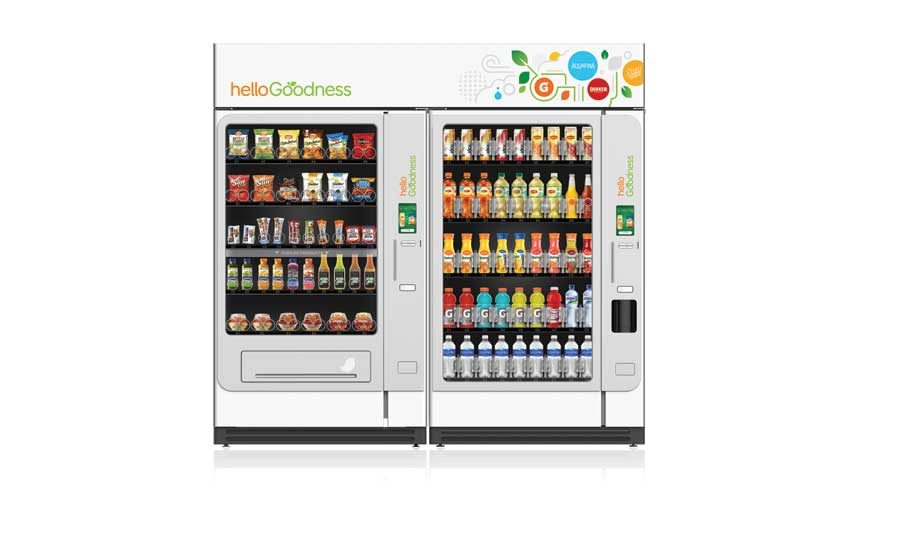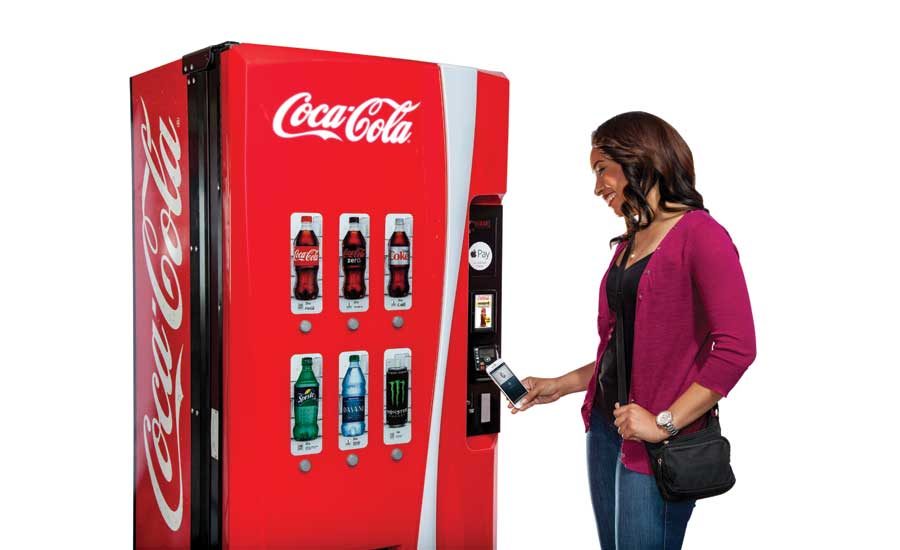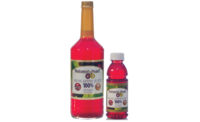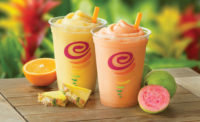Health and wellness drive changes for vending machines
Variety key for vending machine operators

PepsiCo’s Hello Goodness vending initiative, announced in December 2015, offers good- and better-for-you food and beverage options, the company says. (Image courtesy of PepsiCo Inc.)

Touchscreens have potential to help vending operators meet Affordable Care Act mandates, Crane Payment Innovations’ Chuck Reed says. (Image courtesy of The Coca-Cola Co.)


Beverages, especially carbonated soft drinks (CSDs), are an essential part of the vending channel’s success. Although the vending industry faces challenges, like complying with new government regulations and trying to meet consumer health-and-wellness demands, industry experts say that the vending channel is poised for growth.
With 21 percent of sales driven by soft drinks and cold beverages, and an additional 6.3 percent from office coffee service, Los Angeles-based IBISWorld’s September 2015 “Vending Machine Operators in the US” report estimates that revenue for the vending industry in 2015 was $7.5 billion, excluding the vending operations owned and operated by CSD manufacturers. Going forward, the report projects that vending will grow to $8.2 billion by 2020, with an annual growth rate of 1.8 percent, up from the 0.7 percent growth rate in the 2010-2015 timeframe.
Michelle Malison, retailing associate at Chicago-based Euromonitor International, also predicts growth for the vending channel. “Innovation in vending will continue primarily in response to rising demand for convenience,” she says. “Although the channel has experienced decline in the last five years, vending is showing growing signs of innovation in select markets. … Additionally, leveraging new technology (mobile) offers promising growth for this channel. … Specifically, in the U.S., growth in vending will be led by packaged drinks vending.”
However, government regulations currently are proving challenging to vending operators, the IBISWorld report notes. “Vending machine operators have had to contend with stringent food and health regulations regarding the products in their machines,” it states.
Chuck Reed, senior director of marketing and sales operations at Malvern, Pa.-based Crane Payment Innovations, notes that recent laws and regulations are impacting the vending industry. Most notably, a provision of the Affordable Care Act (ACA) requires that consumer packaged goods (CPG) manufacturers label the nutrition information of their CPG products. “Part of this law is intended to transfer over into vending,” he explains. “The implementation of that into vending has been delayed, and the industry has been lobbying for better clarity. … The law is unclear about how we vending operators are supposed to display the caloric information.”
Healthier vending
Nutrition labeling is just one of the recent impacts that health-and-wellness trends have had on the vending channel, experts note. “Increased awareness of the health risks of consuming too much sugar, as well as many consumers seeking to reduce consumption of artificial sweeteners, constrains demand for carbonates and low-calorie carbonates sales through vending machines,” notes Virginia Lee, senior beverage analyst at Euromonitor.
But she adds that the industry has made strides toward overcoming this obstacle. “There is now more signage on vending machines to help consumers choose healthier options,” she says. “… PepsiCo Inc.’s Hello Goodness vending machines, announced in December 2015, go one step further by offering a digital touchscreen with nutrition information for each product. The Hello Goodness machines offer a range of healthier beverages by offering Naked Juice, Pure Life iced tea and Propel Electrolyte Water.”
According to Purchase, N.Y.-based PepsiCo Inc., the Hello Goodness vending initiative offers good- and better-for-you product choices from the company’s food and beverage portfolios. Several thousand units will be placed throughout the country this year in select healthcare, recreational, transportation, governmental, workplace and educational facilities, the company says.
Hello Goodness vending machines feature a digital point-of-sale touchscreen with nutritional information, suggestions for food and beverage pairings, smart technology that gives the company real-time consumer preference insights, dual climate-control shelving, and cashless and digital vending, it adds.
“For years, PepsiCo has been transforming its portfolio to offer more and better food and beverages. We’re continuing this journey with our new Hello Goodness vending initiative, which brings together the power of our brands and our expertise in design, category management and equipment innovation expertise,” said Kirk Tanner, chief operating officer of PepsiCo North America Beverages, in a statement at the time of the launch.
Although health-and-wellness trends have proliferated in the food and beverage market, sales in the vending channel still heavily rely on CSD consumption, the IBISWorld report notes. “[O]ver the past five years, soft drink consumption has contracted due to changing consumer preferences, specifically toward healthier diets,” it states. “As a result, soft drink consumption is expected to decrease during 2015, posing a potential threat to industry operators.”
The report notes that operators that have diversified their product offerings have seen success, but many small vending operations face barriers when it comes to offering better-for-you options. But, with CSD consumption declining, having a diverse selection of items never has been more important, it adds.
“[O]perators that provide a wide variety of products through their vending machines typically generate greater sales,” the IBISWorld report states. “More specifically, companies that have tailored their product offerings to meet the growing trend of health consciousness have secured stronger demand.”
Technological solutions
Despite the challenges and competition facing the vending industry, technological innovations have helped it overcome obstacles. “Technology is absolutely impacting the vending channel and is, in fact, one of the primary reasons for growth in this channel,” Euromonitor’s Malison says.
In regards to the ACA, Crane’s Reed notes that digital screens and touchscreen displays can offer a solution. “If I have a touchscreen, I can change on the fly what it’s showing, and potentially, when you select [an item] for possible purchase, the first thing that would come up would be the calorie information,” he explains.
Both Atlanta-based The Coca-Cola Co. and PepsiCo are deploying touchscreens on their vending machines, Reed notes. He adds that the screens can serve as interactive media platforms reinforcing branding, social media engagement, cashless payment and loyalty programs.
Yet, the implementation of telemeters on vending units will be the most proliferating technology trend in vending, according to Reed. He estimates that just 15 percent of vending machines are utilizing the technology, but the number is expected to grow as bottlers quantify the return on investment that telemetry can deliver to their sales and operational strategies.
Although vending machines will remain relevant for their inherent convenience and 24/7 availability, technology in the form of eCommerce and mobile ordering apps might impose on vending sales, Euromonitor’s Lee notes.
“[T]he expansion of food delivery from companies such as Uber, GrubHub, Postmates and Sprig poses a challenge to the vending industry,” she says. “Growing numbers of office workers are taking advantage of these online food delivery services by using their smartphones. Not only are these workers not leaving their offices to buy lunch, but they are less likely to visit a vending machine for their beverage needs as well. Uber has worked with beverage companies such as Jones Soda and Harvest Juice to deliver alongside its lunches. Sprig delivers LaCroix water and Dry Sparkling Soda along with entrées and salads.”
Malison also notes the challenges from eCommerce, but adds that vending operators can take advantage of some of the benefits of it. “With the rise of online commerce, there are growing opportunities for automated retail (vending),” she says. “Technological advancements are enabling this channel to participate in the notion of omni-channel retailing. As shoppers increasingly demand the option to shop using any device (mobile, tablet, PC, etc.), vending machines can be used to fulfill orders. For example, shoppers can make a purchase anywhere using their personal devices, and utilize vending machines as a collection/return point.”
Looking for a reprint of this article?
From high-res PDFs to custom plaques, order your copy today!








